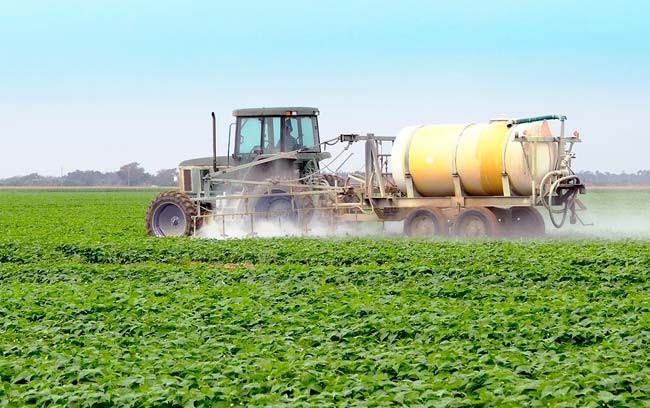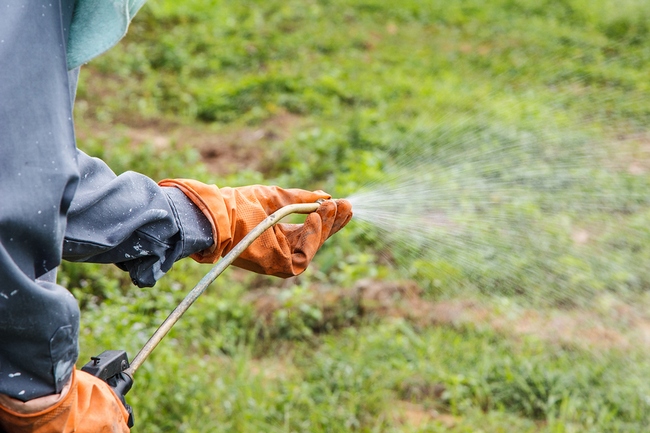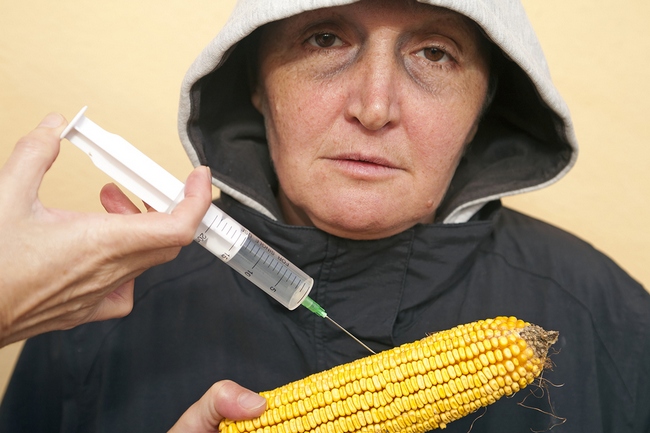- Make It Yourself Lavender Heart-Shaped Bath Bombs!
- 20 Things You Never Knew About “Down There”
- 12 Best Foods For Those Suffering From Arthritis Pain
- 12 Personal Hygiene Mistakes Almost Everyone Makes (Mom Never Told You About #4!)
- 15 Medicinal Plants And Herbs From The Cherokee People
- 12 Mind-Blowing Benefits Of Drinking Coconut Water During Pregnancy
- 12 Outstanding Winter Foods That Won’t Fatten You Up Like A Christmas Turkey
The Lies We are Told about Pesticides

Photo credit: bigstock.com
Although many of us try our best to always eat organic, sometimes it just doesn’t work out. We can’t control everything in life, so when we go to an office meeting and they are serving fruit salad, we can’t stop and ask whether it was made with organic fruit (well, you could but that might not be a good idea). However, there are plenty of people who buy conventional produce all the time with the thought that pesticides are well-regulated by the FDA, right? They can’t be that bad, can they? After all, how many pesticides can they use on a piece of fruit anyway?
More than you can imagine, friends. Currently, there are about 80,000 registered chemicals used. Of all of these thousands of chemicals, only a few hundred are actually tested to see if they are safe for human consumption, and the testing that is done is considered woefully inadequate by most doctors and toxicologists.
One problem with the testing process is that chemicals are tested by themselves. However, in the real world, most agricultural pesticides are used in combinations, and no one tests for the synergies between chemicals.
For example, ammonia, when used properly, is pretty harmless. Bleach is also harmless when used properly. But if you mix ammonia and bleach, you will have fumes so toxic that just one or two good breaths could kill you. The same applies with agricultural chemicals, but no one is testing them for possible health hazards when they mix them.
Also, most testing is only performed on the “active” ingredient. All other ingredients are called inert, and again, the full combination of inert ingredients and the active ingredient is never tested for safety. Find out top 10 companies killing the world with their pesticides.
What other lies or misleading information are we being fed? You might be shocked to find out the truth of the matter.
The ‘Insignificant Amount’ Lie
One of the biggest lies we are told about pesticides is that the active ingredient is found in such small amounts that you have nothing to worry about. This is absolutely not true. In order to find the allowable daily intake, or ADI, for pesticides in food, researchers feed this chemical to animals, and then look to see if any damage has occurred.
Once researchers find a dose that they can feed animals without observing any damage, they call this the NOAEL (no observed adverse effect level). Now this NOAEL number is usually reduced by a factor of anywhere from between 100 to 1,000. The resulting number is then considered to be the safe amount for humans. This process occurs under the assumption that the lower the dose, the less poisonous it is, however, this is a flawed concept. The actual low dose number that researchers assign is only assumed to be safe, that actual number is never tested. It’s only assumed to be safe. Think about it; would you eat something someone told you that they assumed was safe to eat? Not that they KNEW it was safe, only that they assumed?
Continue to Page 2

Photo credit: bigstock.com
The Breakdown Lie
Another lie pesticide manufacturers like to tell you is that their “new and improved” chemicals aren’t like the old ones. They tell you that modern day chemicals are biodegradable and breakdown easily with water, sunlight, and over a short period of time.
This is also not true. This is a no-brainer on our part, really. Think about it. If their chemicals break down so easily, then why is there residue on our food, in the soil, in the water, and even in our bodies? Why is this if they break down so easily?
Because it’s not true. Pesticides do break down, but they don’t disappear, they only change form. For example, some pesticides break down into something called metabolites. In fact, organophosphates break down into oxons, and oxons are as much as 300 times more toxic than in their original form.
SEE ALSO: FDA Admits it Allows Untested Food Additives to be Sold to Consumers
The ‘Rigorous Testing’ Lie
Most Americans assume that if something is for sale, it has undergone numerous tests to determine its safety. This is an assumption many pesticide companies are happy to leave alone. Why bother the public with the fact that most of these chemicals are never tested, let alone rigorously!
In fact, the few tests that are performed are terribly outdated. Typical testing involves feeding an animal some set amount of this pesticide for a few years, killing them, and then looking at the tissue under a microscope to see if there is any damage. Well, when you are talking about parts per trillion, a microscope simply won’t show you what you should be seeing. Why aren’t testing companies using technology such as MRIs to actually look inside a living human or animal and see the damage being done in real time?
Continue to Page 3

Photo credit: bigstock.com
The ‘Regulatory Authorities are in Control’ Lie
Again, most Americans are very trusting of our government and the regulatory authorities that are supposed to be protecting us. We assume that there will be no conflict of interest, and that we can trust them.
Well, if GMOs and fluoride are any indication of the type of job they are doing, America is in serious trouble, friends. All sorts of regulatory authorities simply ignore hundreds of reliable published studies showing the terrible effects some of these pesticides have on human health. Many of the “safe residue levels” that are listed on a pesticide label are nothing more than the data-free assumptions we mentioned above. Those levels have never been tested and they are only assumed to be safe levels.
Why is it that many chemicals, atrazine for example, are banned in Europe, because studies show that it’s dangerous, but Australia and the United States suddenly say that it is safe to use as directed? A study published in 2009 by the Environmental Working Group showed that 232 chemicals are found in the placental cord blood of newborn babies in America. Absolutely no action has been taken after the publication of that study. Read more about shocking 10 foods Amerecans eat that are banned in other countries.
The Organic Low Yield Lie
Although this isn’t a lie about pesticide use, companies that make pesticides like to encourage these types of lies in order to promote their products. The belief that organic farming is somehow less efficient, and therefore produces lower amounts of food, simply isn’t true. Organic farmers obtain the same yields as conventional farmers, which tell us that we don’t need chemicals to make more food.
It’s important to note that organic farming also protects the health of the soil and groundwater sources, something conventional farming can never do.
We need to shift the way that we obtain funds for research funding. As of this article, only 4 dollars from every 1,000 dollars that is spent in agriculture is spent on solutions for organic farming. With the science we have now, we can shift our research away from GMO and more pesticides towards more organic farming practices.
One way to do this is to demand organic food at every opportunity. Consumer demand fuels the world, friends, so vote with your wallet, and vote organic every single time.
You can also grow your own organic food garden. Be aware, however, that even some of the “natural non-toxic” pesticides for sale in your local garden center might not be as safe as you think. Boric acid, for example, a chemical derived from a natural mineral, boron, might seem safe, but just a teaspoon of boric acid can kill an infant. Another popular botanical insecticide, Rotenone, is toxic to fish and recently has been suspect of being involved in the development of disease in humans. For a small family garden, hand picking to remove larger insects or a mixture of soap and water is usually all that is needed to kill most garden pests.
































